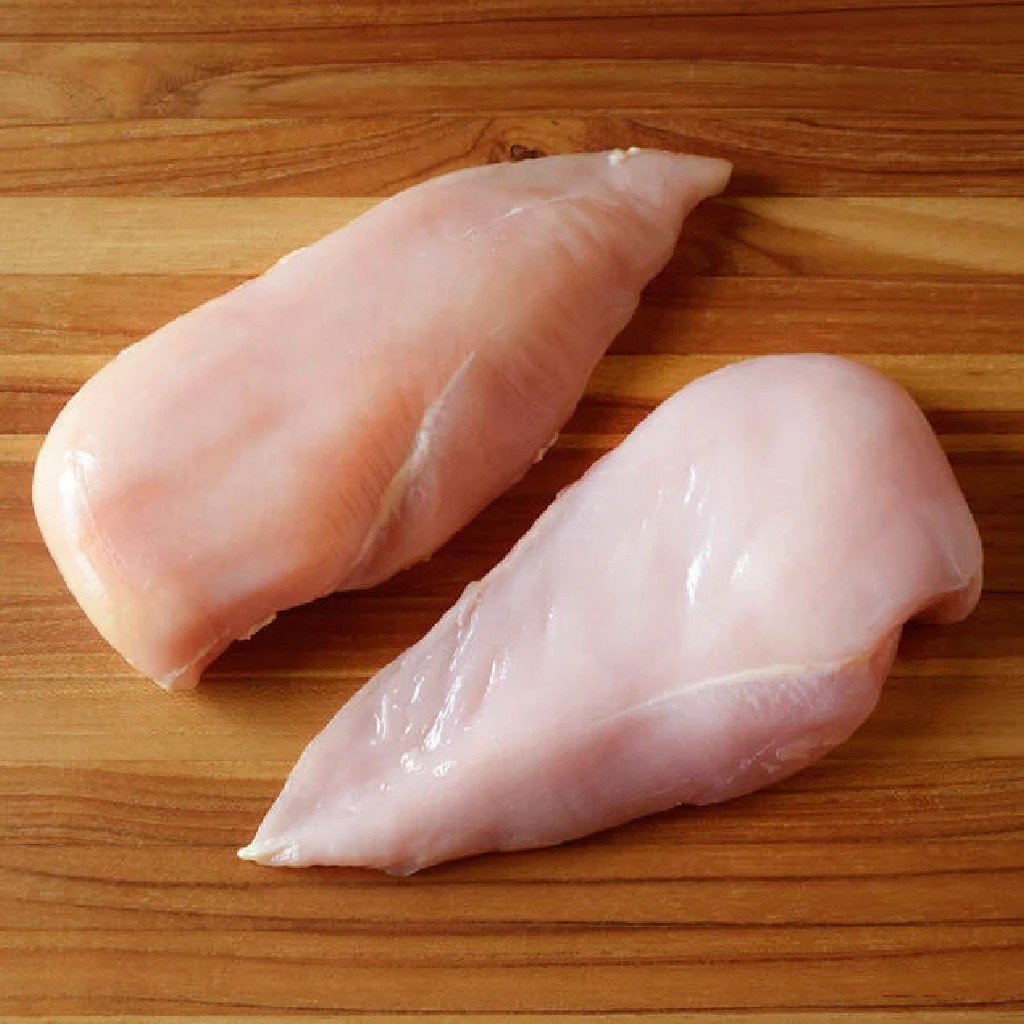Bruised Chicken Breast: A Sign of Quality or a Red Flag?
As you stroll through the meat aisle at the grocery store, you may notice chicken breast packages that look unusual. They might have some discoloration or visible bruising. It can be tricky to tell whether the chicken inside is still good to go or if it’s been damaged.
I’ve been there too, wondering if I should go ahead and buy it or if I’m better off putting it back on the shelf. I love cooking, but I hate dealing with spoiled meat. I’ve learned how to spot bruised chicken and handle it properly.
In this blog post, I’ll walk you through everything you need to know about bruised chicken breasts. You’ll learn how to identify bruises and get tips to prevent them. This knowledge helps you make safer choices when picking chicken.
In the end, you’ll feel more confident in your grocery choices. You’ll know you’re bringing home the best quality meat for your meals.
How To Tell If Chicken Breast Is Bruised?
One way to tell if chicken breast is bruised is to look for color changes. It may be bruised if the meat is discolored or has unusual-looking markings.
Another way to tell if the chicken is bruised is to feel for lumps or bumps. Gently press on the surface of the meat with your fingers. If you feel any hard spots, the chicken is likely bruised.
Finally, listen for a popping sound when you press on the chicken. If you hear a pop, the chicken has been damaged and is no longer safe to eat.
What Causes Bruises on Chicken Breast?

ou probably imagine a black-and-blue mark on your skin when you think of bruising. But did you know that chicken breasts can also be bruised? Yes, chicken breasts can get bruises.
The chicken breast comprises muscle tissue like your arm’s or leg’s fleshy part. And when that muscle tissue is damaged, blood vessels can leak and cause bruising.
So, how do chicken breasts get bruised? There are a few different ways.
First, the chicken may have been mishandled during processing. If the bird was dropped or roughly handled, it could result in bruises on the meat.
Second, if the chicken is frozen and thawed too quickly, the ice crystals can damage the muscle tissue and cause bruising.
If the chicken was cooked at a high temperature or for a short time, the heat could cause the muscle tissue to contract and lead to bruising.
Fortunately, bruises are not dangerous and pose no threat to your health. However, they can affect the quality of your meat. Bruised meat is often tougher and less flavorful than its new counterpart.
So, if you’re looking for the best-tasting chicken breast, be sure to choose a cut that is free of bruises.
The Misconception About Quality in Bruised Chicken Breast
A bruised chicken breast often worries people. They think it means poor quality or unsafe meat. But that’s not always the case. The discoloration may look unappetizing, yet it often has nothing to do with freshness or safety. Bruising usually happens during processing or transport. This occurs when the meat faces small impacts or pressure. As a result, blood vessels under the skin break.
Bruising vs. Spoilage: Key Differences
It’s important to distinguish between bruising and actual spoilage. Here’s a quick comparison:
| Factor | Bruising | Spoilage |
| Cause | Physical impact | Bacterial growth |
| Appearance | Dark red, purple, or brown spots | Slimy texture, gray or green patches |
| Smell | No foul odor | Sour or rotten smell |
| Safety | Safe to eat if cooked properly | Unsafe—should be discarded |
Is It Safe To Eat Bruised Chicken Breast?
Yes. It is safe to eat bruised chicken breast [1]. However, there are a few things you should keep in mind.
First, make sure that the bruises are not deep or bleeding. If they are, it’s best to discard the chicken.
Second, avoid eating any bruised areas that are close to the bone. These areas may contain bacteria that can cause food poisoning.
Finally, cook the chicken thoroughly to kill any harmful bacteria. When in doubt, throw it out. Bruised chicken breast is perfectly safe if you take a few precautions.
Why Does Your Raw Chicken Look Purple?
You may have noticed that your raw chicken sometimes looks purple. While this may be alarming at first, it’s quite normal.
Chicken meat has a protein called myoglobin. This protein gives chicken its red color.
When exposed to oxygen, myoglobin turns red. However, the myoglobin will remain purple if the chicken is not exposed to oxygen.
“Eat fried chicken every day as the angels go sailing by.”
– Ella Fitzgerald, ‘Cabin In The Sky
So, if you see a raw chicken that looks purple, don’t be alarmed – it’s still safe to eat. Just make sure to cook it thoroughly before eating.
Tips On How To Prevent Bruising In Chicken Breast
First, be sure to use a sharp knife when cutting the meat. A dull knife is more likely to crush the flesh, which can lead to bruising.
Second, avoid using too much pressure when handling the chicken. Apply enough pressure to keep the meat in place while cutting it.
Finally, ensure that your work surface is clean and debris-free. Any dirt or grit on the surface can cause the chicken to bruise.
Cooking with Bruised Chicken Breast
Cooking with bruised chicken breast requires a few extra precautions to ensure both safety and quality. First, inspect the chicken carefully. Bruised areas can cause bacteria to grow. If the chicken looks spoiled or smells bad, throw it away. Always wash your hands before and after handling raw poultry, and sanitize any surfaces that come into contact with it.
When it comes to flavor and texture, bruised chicken breast may be slightly less tender than fresh chicken. The bruising can cause the meat to be uneven, leading to slight toughness in certain areas. Despite this, cooking methods like slow roasting or braising can help retain moisture and make the meat more tender.
For the best results, try marinating the chicken before cooking to help mask any minor flavor imperfections. You can grill, pan-sear, or bake the chicken. Just be sure to cook it well. The internal temperature should reach 165°F (75°C) for safety.
| Check out: Cook Chicken Breast at 350°F: How Long? |
FAQs on Bruised Chicken Breast
Can you eat bruised chicken wings?
Yes. Bruised chicken wings are safe to eat but may not taste very good. The bruising can cause the chicken meat to become tough and dry. It’s best to discard any wings that have extensive bruising.
Is it okay for a chicken to have purple spots?
Yes, it is okay for a chicken to have purple spots as long as the spots are not slimy or bloody. The purple spots are caused by a pigment called anthocyanin, also found in red cabbage and eggplant.
Anthocyanin is a natural antioxidant. It helps protect birds from bacteria and toxins. It also gives some types of chicken their reddish or purplish color.
Can you eat discolored chicken breast?
Not really. Avoid eating discolored chicken breast. It usually means the meat is spoiled.
Throw away discolored or slimy chicken. It may have harmful bacteria that can make you sick.
In Conclusion
So, can chicken breasts be bruised? Unfortunately, the answer is yes.
If you handle your chicken carefully and cook it right, you can avoid problems from bruising.
You can enjoy delicious, healthy chicken breast without problems with a little care and attention.
Reference:
- https://ask.usda.gov/s/article/Is-it-safe-to-eat-poultry-with-bruise-marks/







